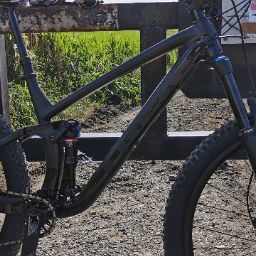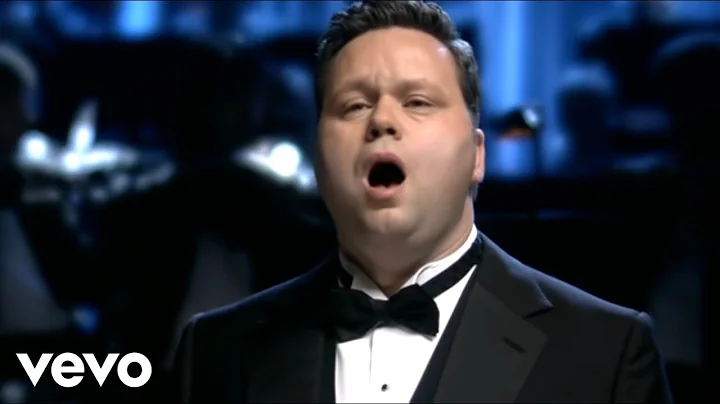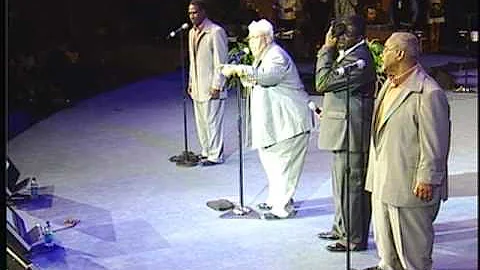Paul Thomas Potter
age ~39
from Rowlett, TX
- Also known as:
-
- Paul T Potter
- Pam Potter
- Paul Patter
- Phone and address:
- 9801 Fairway Vista Dr, Rowlett, TX 75089
Paul Potter Phones & Addresses
- 9801 Fairway Vista Dr, Rowlett, TX 75089
- Hamilton, TX
- 5033 Geranium Ct, Mc Kinney, TX 75070 • (505)4633101
- 5208 Park Heights Rd NW, Albuquerque, NM 87120
- Austin, TX
- Fredericksburg, TX
- Bloomington, IN
Isbn (Books And Publications)

Psyche and Soma: Physicians and Metaphysicians on the Mind-Body Problem from Antiquity to Enlightenment
view sourceAuthor
Paul Potter
ISBN #
0198238401

Psyche and Soma: Physicians and Metaphysicians on the Mind-Body Problem from Antiquity to Enlightenment
view sourceAuthor
Paul Potter
ISBN #
0199256748




An Annotated Bibliography of Canadian Medical Periodicals, 1826-1975
view sourceAuthor
Paul Potter
ISBN #
0772012431


Text and Tradition: Studies in Ancient Medicine and Its Transmission Presented to Jutta Kollesch
view sourceAuthor
Paul Potter
ISBN #
9004110526
License Records
Paul Daniel Potter
License #:
58488 - Expired
Category:
Nursing Support
Issued Date:
Apr 6, 2007
Effective Date:
Apr 16, 2010
Expiration Date:
Apr 6, 2010
Type:
Medication Aide
Paul Daniel Potter
License #:
51892 - Expired
Category:
Nursing Support
Issued Date:
Mar 24, 2004
Effective Date:
Apr 3, 2007
Expiration Date:
Mar 24, 2007
Type:
Medication Aide
Paul Edward Potter
License #:
1848 - Expired
Category:
Physical Therapy
Issued Date:
Sep 25, 2002
Effective Date:
Jul 1, 2003
Expiration Date:
Nov 1, 2003
Type:
PTA Supervisor
Paul Edward Potter
License #:
276 - Expired
Category:
Physical Therapy
Issued Date:
Jun 6, 1994
Effective Date:
Dec 15, 1995
Type:
PTA Supervisor
Paul Edward Potter
License #:
6371 - Expired
Category:
Pharmacy
Issued Date:
Jun 22, 1937
Effective Date:
Oct 30, 1996
Type:
Pharmacist
Paul Stephen Potter
License #:
8038 - Expired
Category:
Pharmacy
Issued Date:
Jun 30, 1970
Effective Date:
Jan 1, 1988
Type:
Pharmacist
Name / Title
Company / Classification
Phones & Addresses
BLAST MASTER ENTERPRISES
Sandblasting
Sandblasting
1000 McLEAN ROAD, QUALICUM BEACH, BC V9K 1W5
(250)7523202
(250)7523202
Director
PAUL STUART PROPERTIES, INC
4669 Adrian Way, Plano, TX 75024
BLAST MASTER ENTERPRISES
Sandblasting
Sandblasting
(250)7523202
Director
S S GOLF GROUP, INC
15503 Golden Crk Rd, Dallas, TX 75248
1355 Errol Pkwy, Apopka, FL 32712
2309 Crestline Dr, Abilene, TX 79602
1355 Errol Pkwy, Apopka, FL 32712
2309 Crestline Dr, Abilene, TX 79602
Principal
Electronic Manufacturing Services
Services-Misc
Services-Misc
4669 Adrian Way, Plano, TX 75024
Manager
ELECTRONICS MANUFACTURING SERVICES, LLC
4669 Adrian Way, Plano, TX 75024
PO Box 1643, Allen, TX 75013
PO Box 1643, Allen, TX 75013
Us Patents
-
Hyper-Aeration Apparatus For Attic Ventilation
view source -
US Patent:20130040553, Feb 14, 2013
-
Filed:Aug 12, 2011
-
Appl. No.:13/136856
-
Inventors:Paul S. Potter - Plano TX, US
-
International Classification:F24F 7/007
-
US Classification:454341
-
Abstract:An aeration/ventilation device to be mounted on an aperture of a soffit may include a mounting platform to cooperate with the aperture of the soffit, a motor housing connected to the mounting platform, and a fan motor connected to the motor housing to a.) pull/draw cooler air in from the exterior of the soffit (under-eave) area of the building structure thus forcing the cooler air into the soffit interior and on into the attic space. b.) pull/draw hotter air out from the attic space into the interior of the soffit area thus forcing the hotter air out from the under-eave area of the structure. The aeration/ventilation device my use a double, single or multiple fan motors. These fan motors may be fixed to or be adjustable to the pitch angle of the roof structures. The aeration device my also include an electronic control housing to control the operation of the fan motors. The exhaust side of the motors may be fitted with adjustable air thruster device to create the effective exhaust velocity for improved air ventilation and circulation, along with a domed intake screens designed for improved air intake velocity. As well as being equipped with an intake rain guard(s).
-
Integrated Attic Ventilation, Air Conditioning And Heating System Electronic Controller And System And Method For Use Of Same
view source -
US Patent:20140081468, Mar 20, 2014
-
Filed:Sep 11, 2013
-
Appl. No.:14/023514
-
Inventors:Paul S. Potter - Plano TX, US
-
Assignee:Paul Stuart & Associates, LLC. - Plano TX
-
International Classification:G05D 23/19
-
US Classification:700278
-
Abstract:An integrated attic ventilation, air conditioning and heating system electronic controller, with a system and method for use of the same, is disclosed. In one embodiment, the integrated electronic controller includes a housing configured to be secured within an attic space in a building structure having a living area. A temperature input and humidity input receive ambient temperature and humidity readings, respectively. The ambient measurements are compared to pre-determined temperature and humidity thresholds. If a threshold is exceeded, signals are send to actuate, in a coordinated fashion, a powered air intake and powered attic exhaust assembly. The powered air intake and powered attic exhaust assembly are operated intermittently, in coordination with the HVAC system, initially at a first set of extreme thresholds and operated constantly at a second set of more extreme thresholds.
-
Dual Speed Controller For Attic Ventilator
view source -
US Patent:50498010, Sep 17, 1991
-
Filed:Mar 9, 1990
-
Appl. No.:7/491168
-
Inventors:Paul S. Potter - Dallas TX
-
Assignee:Clark United Corporation - Dallas TX
-
International Classification:H02P 144
F24F 700 -
US Classification:318785
-
Abstract:A controller for a dual speed induction motor selectively applies operating power to the low speed motor terminal or the high speed motor terminal according to the open circuit/closed circuit condition of a low temperature thermostat and a high temperature thermostat. For low speed operation, operating power is conditionally applied to the low speed motor terminal through the low temperature thermostat and through the normally closed circuit of a single pole, double throw switch. For high speed operation, operating power is conditionally applied to the high speed motor terminal through the high temperature thermostat and the normally open circuit of the single pole, double throw switch. The operating position of the single pole, double throw switch is determined by a solenoid which is connected in series circuit relation with the high temperature thermostat.
-
Spindle Bearing Assembly For Turbine Ventilator
view source -
US Patent:48319210, May 23, 1989
-
Filed:May 24, 1988
-
Appl. No.:7/198773
-
Inventors:Paul S. Potter - Dallas TX
-
Assignee:Clark United Corporation - Dallas TX
-
International Classification:F23L 1702
-
US Classification:98 75
-
Abstract:A wind powered turbine ventilator is disclosed in which a turbine head is rotatably supported about a tubular base through which air flow is to be induced. For supporting the head for rotation, there is provided a sleeved ball bearing housing coaxially secured in a bidirectional interlock to a relatively stationary mounting plate and through which an axial spindle extends. Also disclosed is a subassembly of the bearing housing secured to the mounting plate in the bidirectional interlock.
Medicine Doctors

Paul Stephen Potter
view sourceSpecialties:
Anesthesiology
Education:
The University of Texas at Houston (1985)
Resumes

Paul Potter
view source
Paul Potter
view source
Paul Tripp D Potter
view source
Paul Potter
view source
Paul Potter
view source
Paul Potter
view source
Paul Potter
view sourceLocation:
United States

Paul Potter
view sourceLocation:
United States
Myspace
Googleplus

Paul Potter
Education:
Waseley Hills High School
Tagline:
Geeky goth/alternative type

Paul Potter
Work:
USEL - Vintage Satchel Co - Esales Coordinator (2013)

Paul Potter

Paul Potter

Paul Potter

Paul Potter

Paul Potter

Paul Potter
Flickr
Plaxo

Paul De Potter
view source
Paul Potter
view sourceTulsa, OKInternet Marketing Consultant at Paul Potter

Paul Potter
view sourceSt. Louis, MO
Classmates

Paul Potter
view sourceSchools:
Dowagiac Union High School Dowagiac MI 1981-1985
Community:
Loretta Wilson, Brian Burns

Paul Potter
view sourceSchools:
Avon High School Avon IL 1942-1946
Community:
Dorothy Haar, Chip Stephens, Jacqueline Jackie, David Keil

Paul Potter
view sourceSchools:
Masonville School Annandale VA 1966-1972, Poe Middle School Annandale VA 1972-1974
Community:
Nancy Bolton, Mary Jarman

Paul Potter
view sourceSchools:
Hewitt High School Waco TX 1998-2001
Community:
Terry Thompson, Elaine Maynard, Vergenia Wagner

Paul Potter
view sourceSchools:
Desert Edge High School Goodyear AZ 2004-2008
Community:
Randy Kirkpatrick, Alicia Ingram

Paul Potter
view sourceSchools:
Quaker Hill Elementary School Quaker Hill CT 1985-1989, Clark Lane Middle School Waterford CT 1989-1991
Community:
Jennifer Galpin, Theresa Bateman, Heather Bardeleben, Joy Roselund

Paul Potter
view sourceSchools:
Attica High School Attica NY 1961-1965
Community:
Denise Downs, Kathy Kibler, Stephan Ross, Moira Lichen, Joan Conway, Rick Knapp, Joe Kipphut, Marilyn Craig, Terry Travis, Sue Bader, Byron Ball, Nancy Stedman
Youtube

Paul E. Potter
view source
Amosun Paul Potter
view source
Levarn Paul Potter
view source
Stephen Paul Potter
view source
Paul E Potter
view source
Paul Potter
view source
Paul Potter
view source
Paul Potter
view sourceGet Report for Paul Thomas Potter from Rowlett, TX, age ~39













